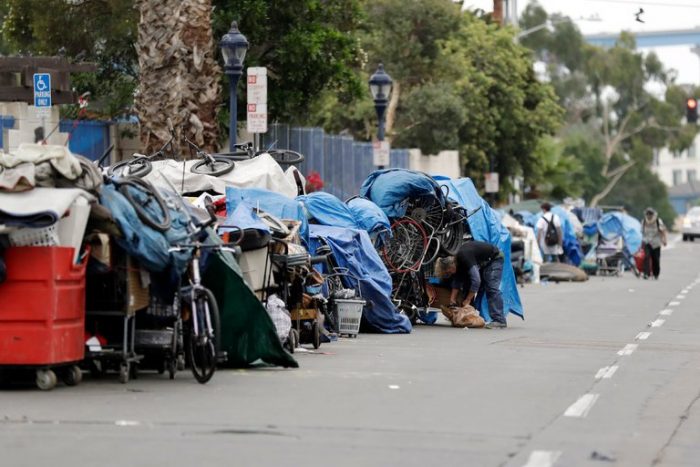
Los Angeles officials last Friday announced the formation of a special task force that has begun an effort to survey high fire hazard zones in order to identify and clear out homeless encampments.
The move comes after the December Skirball Fire in Bel-Air that destroyed six homes was believed to have been started at a homeless encampment in the Sepulveda Pass in a wooded area that city officials said they were unaware existed.
Mayor Eric Garcetti and Los Angeles Fire Department Chief Ralph Terrazas described the task force, which consists of personnel from the LAFD, the Los Angeles Homeless Services Authority and the Bureau of Sanitation, as a more proactive and systematic approach than what has been done in the past to identify homeless encampments in high fire hazard zones.
During a news conference at a downtown fire station, Terrazas said the city “never had an organized, systematic approach like we do now,” and that “we’re taking this to the next level, I want a more formalized process.”
Terrazas said that in the past if LAFD personnel came across an encampment in a high fire hazard zone they would notify the proper departments, but that the LAFD did not do any proactive surveying as is now being done.
Terrazas said the survey would take about a week, and any encampments that are identified will be visited by LAHSA and Bureau of Sanitation workers to encourage the people there to move out while also offering them services.
“Somebody said to me, isn’t this a little bit like trying to find the cow that kicked over Mrs. O’Leary’s lantern in (the Chicago Fire). I don’t believe that is the case,” Garcetti said. “I think that we can make a good faith effort to at least have more people in the high risk areas.”
Garcetti also said that the task force is a ”multi-jurisdictional approach that a few years ago we didn’t have” and that the LAHSA personnel would work to move the homeless people “to beds, to shelters, to new housing that we’re building. Homelessness is a difficult issue but we do have beds that are available.”
Terrazas also said the survey would be part of a regular undertaking.
“We want to institutionalize this process, this is not simply a one and you’re done. This is something that we will continually have to do until we get a handle on this problem,” he said.



